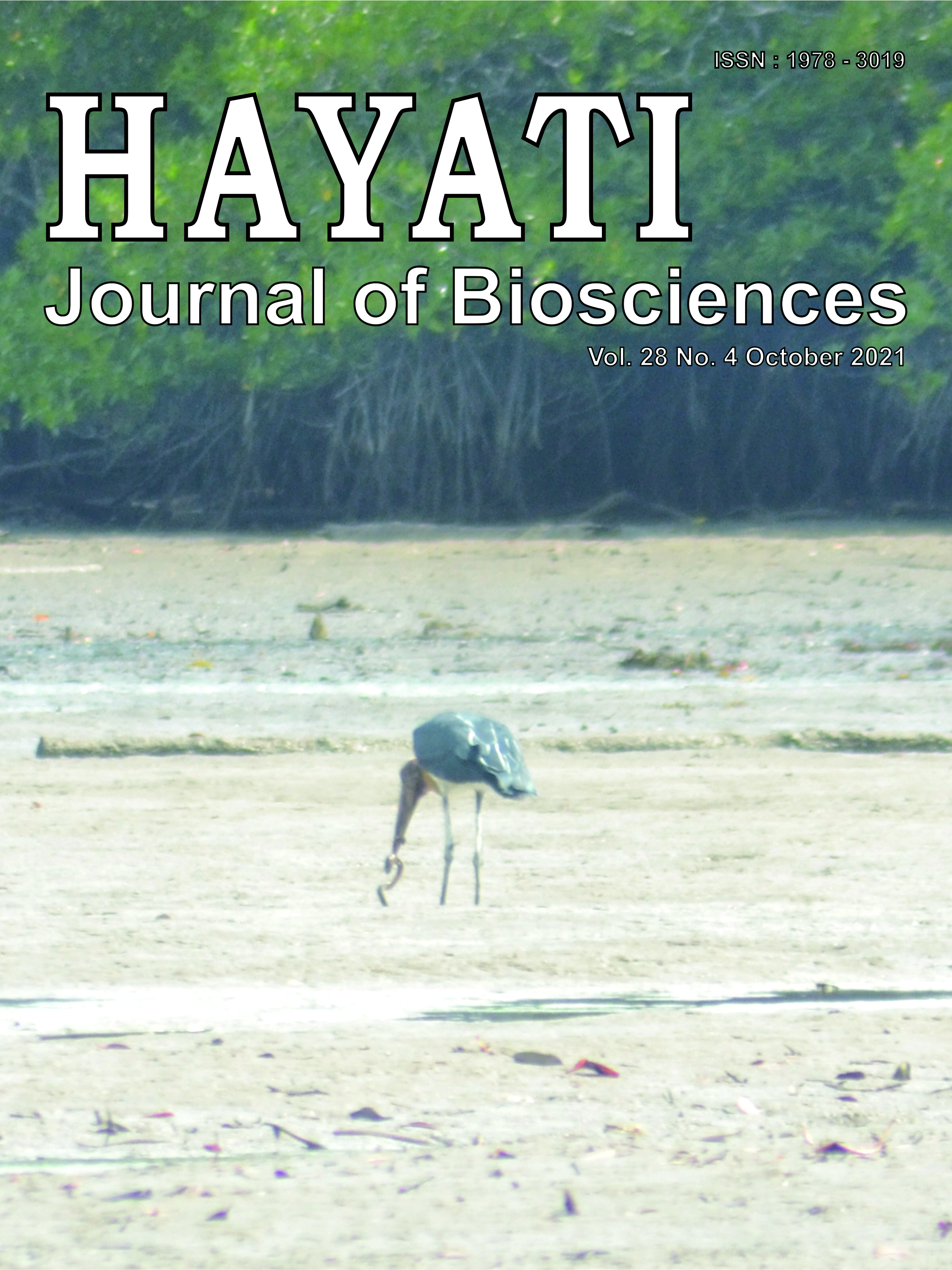Evaluation of Bacterial Biofilm as Biosensor for Detecting Phenol, Catechol, and 1,2-dihydroxynaphthalene
Abstract
Monitoring of water quality from the presence of polyaromatic hydrocarbon (PAHs) compounds and its derivates are important for keeping the healthy aquatic environment. Some of those derivates are phenol and several related compounds sharing simmilar structures. This reseach aimed for the detection of those phenol and several similar compounds monitoring due to PAHs degradation. Three identified bacterial isolates of Pseudomonas aeruginosa, Staphylococcus sciuri, and Bacillus amyloliquifaciens were selected based on their phenol degradation characters. On physiological properties all three isolates were observed to degrade several hydrophobic substances such as for naphthalene and anthracene. Yet, genetic analysis indicated that the phenolic degradating oxygenase gene was detected only in the P. aeruginosa and S. sciuri. Applying those isolates for biofilm as biosensor showed a sufficient analytical performance such as their limit of detection between 0.1-0.5 μM.
Downloads
Copyright (c) 2021 Dyah Iswantini, Ali Aulia Ghozali, Cecep Kusmana, Novik Nurhidayat

This work is licensed under a Creative Commons Attribution-NonCommercial 4.0 International License.
HAYATI J Biosci is an open access journal and the article's license is CC-BY-NC. This license lets others distribute, remix, tweak, and build upon author's work, as long as they credit the original creation. Authors retain copyright and grant the journal/publisher non exclusive publishing rights with the work simultaneously licensed under a https://creativecommons.org/

























.png) IPB University
IPB University Department of Biology
Department of Biology The Indonesian Biological Society
The Indonesian Biological Society 

